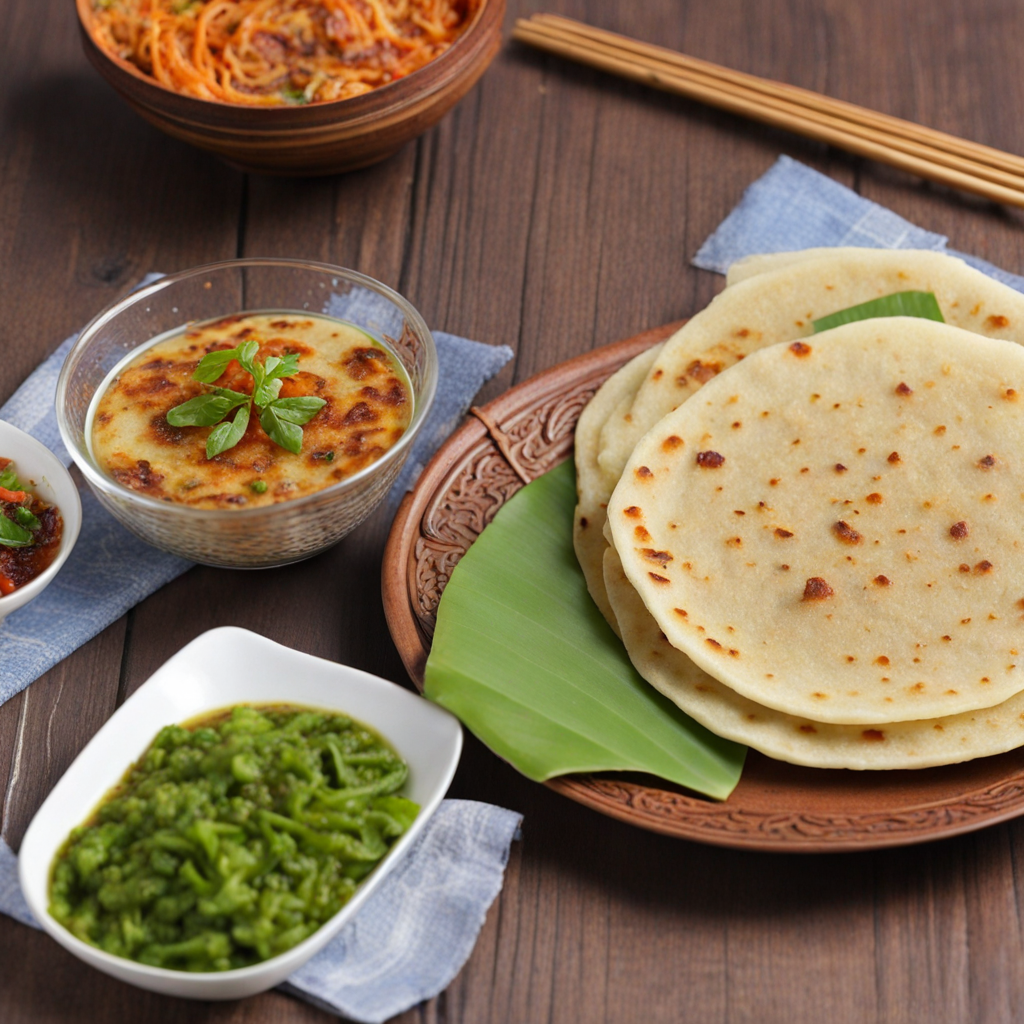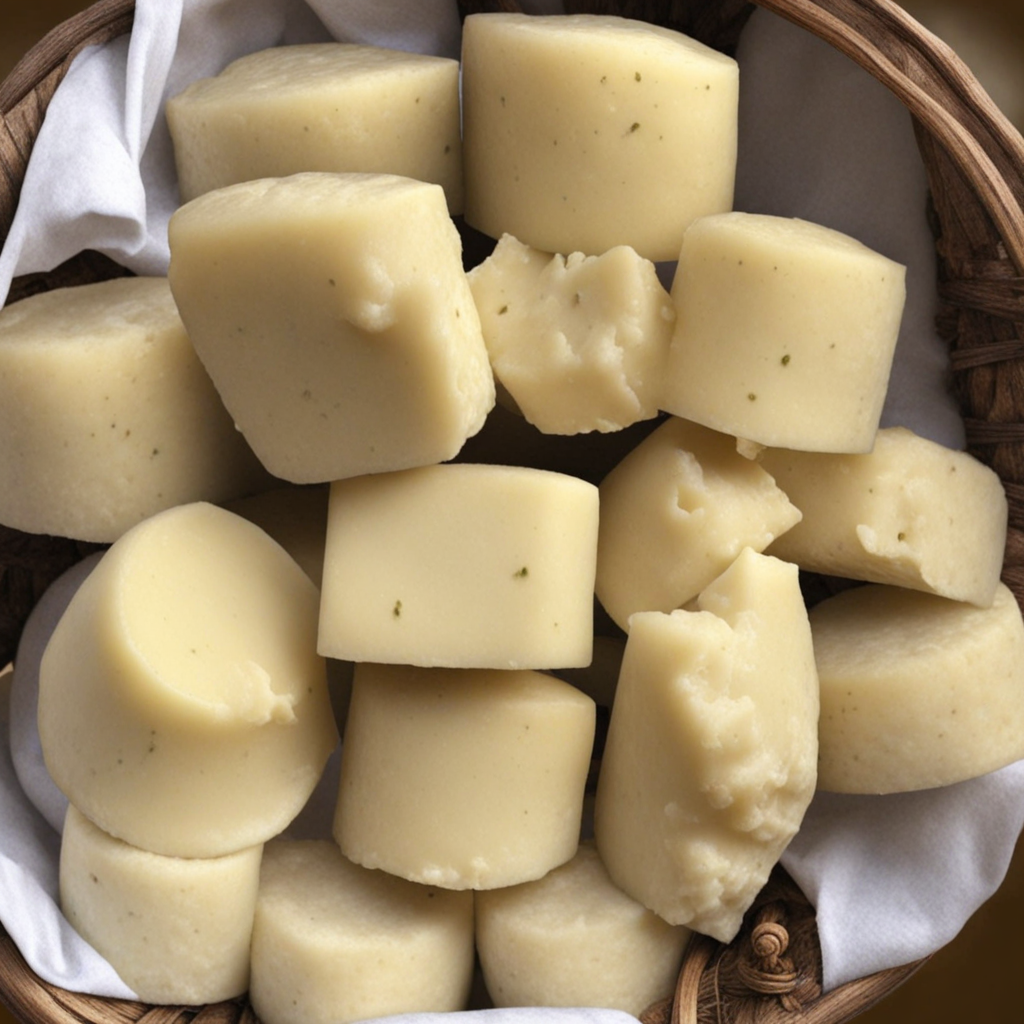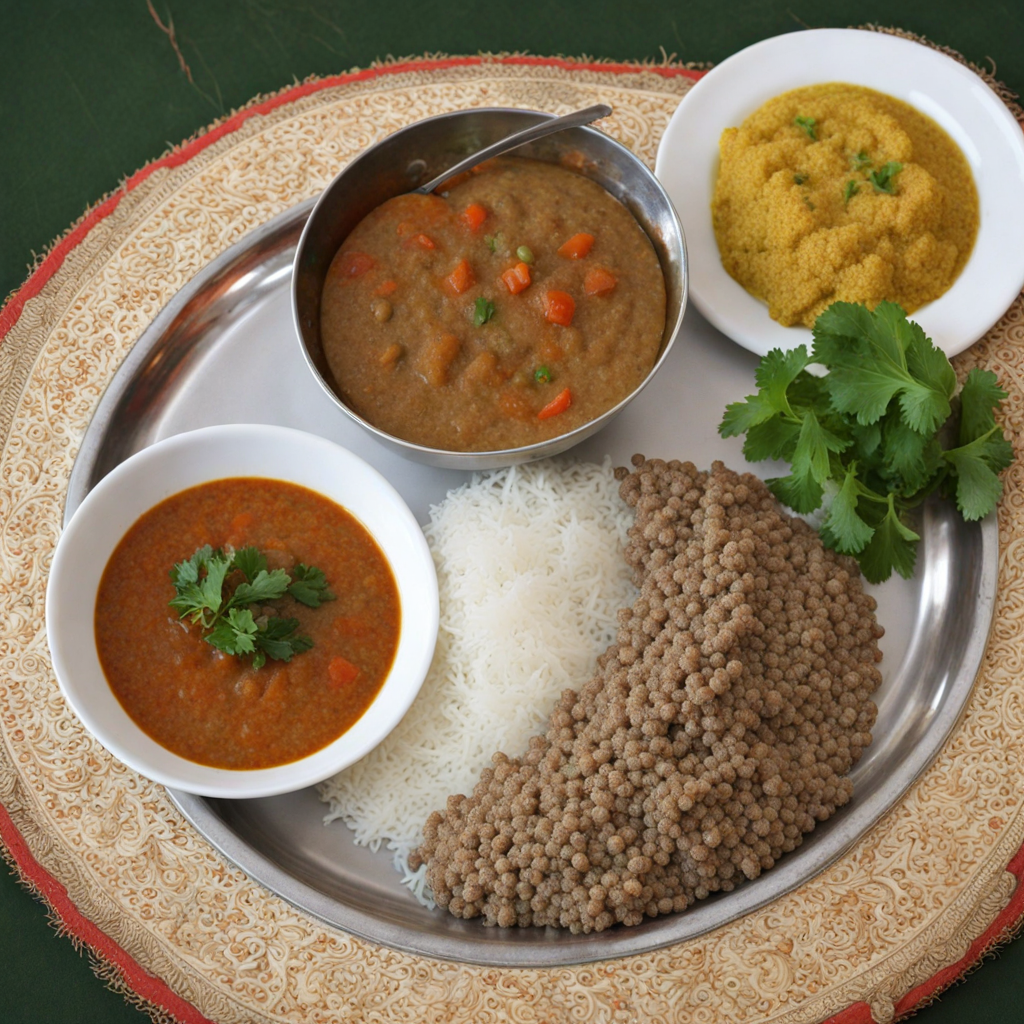Bara
Bara is a traditional Nepali dish that embodies the rich culinary heritage of the country. It is a deep-fried delicacy made from ground black lentils, also known as urad dal, which are soaked, ground into a smooth batter, and then mixed with a variety of spices and herbs. The batter is often enhanced with ingredients like ginger, garlic, green chilies, and sometimes even finely chopped onions or coriander leaves, resulting in a flavor profile that is both aromatic and savory. The key to a perfect Bara lies in the texture; it should be crispy on the outside while remaining soft and fluffy on the inside, providing a delightful contrast in every bite.
Bara is commonly enjoyed as a snack or appetizer, often served with a tangy dipping sauce made from tamarind or a spicy chutney that complements its savory notes. In some regions, it is also paired with a side of pickles or even curd, enhancing the overall taste experience. The dish is not only popular at street food stalls but is also a staple during festivals and special occasions, showcasing its significance in Nepalese culture. Eating Bara is a communal experience, often shared among family and friends, making it a comforting food that brings people together.
How It Became This Dish
The History and Cultural Significance of 'बरा' in Nepal In the vast tapestry of Nepali cuisine, one can find a multitude of regional specialties that reflect the diversity of its cultural and ethnic backgrounds. Among these treasures is 'बरा' (pronounced "bara"), a savory snack that holds a special place in the hearts and stomachs of many Nepalese people. This dish, primarily made from lentils, is not just a simple food item but a cultural artifact that symbolizes community, tradition, and the rich agricultural heritage of the region. Origins of Bara The origins of 'बरा' can be traced back to the Terai region of Nepal, which is characterized by its fertile plains and a warm climate conducive to agriculture. The Terai has historically been a melting pot of various ethnic groups and cultures, including the Tharu, Madhesi, and various indigenous communities, each contributing their culinary practices to the region's food landscape. Bara is made primarily from black gram lentils (urad dal), which are soaked, ground, and then shaped into circular patties before being deep-fried. The use of lentils in this dish reflects the agricultural practices of the region, where pulses have been a staple for centuries. Lentils not only provide a significant source of protein but also hold nutritional and medicinal value, making them a crucial food source in a predominantly agrarian society. Furthermore, the name 'बरा' itself is derived from the preparation method and the form it takes. The word is derived from the Sanskrit word "vara," meaning "to fry," which speaks to the cooking technique employed in creating this delicacy. The dish's deep-fried nature lends it a crispy exterior while keeping the inside soft and flavorful. Cultural Significance Bara is more than just a dish; it is steeped in cultural significance and often associated with celebrations, festivals, and social gatherings in Nepal. Traditionally, it is served during important occasions such as weddings, religious ceremonies, and festivals. In many households, preparing bara becomes a communal activity, where family and friends gather to soak, grind, and fry the lentil patties together. This communal aspect of preparation fosters a sense of unity, reinforcing social bonds and cultural identity. In the Newar community, for instance, bara is often part of the ceremonial offerings made during festivals like Indra Jatra and other local celebrations. These occasions showcase the dish's role in ritualistic practices, where it is offered to deities and shared among participants as a symbol of communal harmony and gratitude. Moreover, bara has made its way into the street food culture of Nepal. Vendors often sell it as a quick snack, accompanied by various chutneys and pickles, attracting locals and tourists alike. This accessibility has allowed bara to transcend its traditional roots, making it a beloved snack for people from all walks of life. Its popularity in urban areas reflects the blending of traditional cuisine with contemporary lifestyles, showcasing how food can evolve while retaining its cultural significance. Development Over Time As with many traditional dishes, the preparation and presentation of bara have evolved over time. While the basic recipe remains largely unchanged, variations have emerged across different regions and communities. For instance, some variations include the addition of spices like cumin, coriander, or even green chilies to enhance the flavor profile. Others experiment with fillings, such as minced meat or vegetables, making it a versatile dish that caters to diverse tastes. In recent years, there has been a growing interest in health-conscious eating, leading to innovations in how bara is prepared. While traditional bara is deep-fried, some modern recipes advocate for baking or air-frying to reduce oil content, appealing to a health-conscious audience. This trend reflects a broader movement within Nepalese cuisine, where traditional dishes are being reimagined to fit contemporary dietary preferences. Additionally, the rise of food tourism has placed dishes like bara in the spotlight. Tourists seeking authentic culinary experiences are drawn to local delicacies, and street vendors selling bara have become popular attractions. This has encouraged a resurgence of interest in traditional cooking methods and ingredients, with many young chefs and home cooks striving to preserve the authenticity of the dish while also infusing it with modern twists. Bara in the Global Context The global diaspora of Nepali people has also played a role in promoting baaras outside the borders of Nepal. As Nepali communities establish themselves in countries around the world, they bring with them their culinary traditions. Restaurants and food stalls serving traditional dishes, including bara, have popped up in cities with significant Nepali populations, such as New York, London, and Sydney. This globalization of Nepali cuisine has led to a greater appreciation for the cultural heritage behind each dish. Moreover, bara's simple yet delicious nature makes it adaptable to different culinary contexts. It has found its way into fusion cuisine, where chefs experiment with flavors and presentations. From being served as part of a gourmet tasting menu to being featured in food festivals celebrating South Asian cuisine, bara has proven to be a versatile dish that resonates with a wide audience. Conclusion In conclusion, 'बारा' is a dish that encapsulates the essence of Nepalese culture—its agricultural roots, communal values, and adaptability to changing times. From its origins in the Terai region to its current status as a beloved street food and a symbol of celebration, bara has woven itself into the fabric of Nepali life. As it continues to evolve and gain recognition on the global stage, it serves as a reminder of the rich culinary heritage that Nepal has to offer, bridging the gap between tradition and modernity. Through its journey, bara not only nourishes the body but also feeds the soul, fostering connections among people, cultures, and generations.
You may like
Discover local flavors from Nepal







